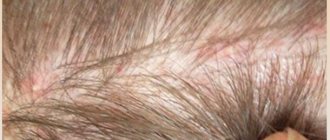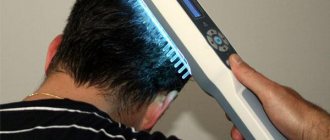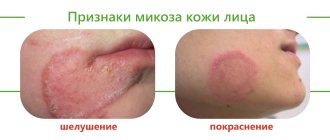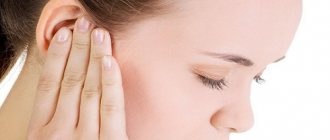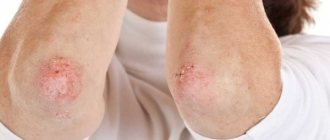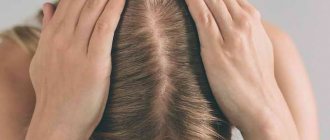The appearance of yellow dandruff on the scalp is a characteristic symptom of one of the dermatological pathologies - seborrheic dermatitis, or rather its oily form. Oily seborrhea is manifested by the presence of local lesions of the scalp in the form of characteristic crusts. They flake off over time, forming yellow dandruff on the scalp. To establish an accurate diagnosis and treatment of this pathology, it is recommended to undergo a preventive examination by a trichologist/dermatologist. Treatment is usually more complex than dry dandruff.
Scalp diseases: names and causes
Common skin diseases are considered to be:
- diseases of a dermatological nature (including seborrhea, eczema and hyperkeratosis);
- autoimmune diseases of the scalp (including psoriasis and scleroderma);
- infectious (formation of pustules, appearance of lice, etc.);
- fungal rashes.
Whatever the cause of the disease, it must be eliminated in time. It is important to start treatment as early as possible, because wasted time can have serious consequences.
Causes and signs of dermatological diseases
The appearance of dermatological diseases of the scalp in a patient occurs when the sebaceous glands work abnormally. For example, the well-known disease seborrhea occurs in people who constantly live in a stressful state, which leads to a malfunction of the gastrointestinal tract, and constant snacking on fast food and sweets only worsens the clinical picture.
Seborrhea can occur as a result of hormonal imbalance. Moreover, it is observed equally in both the male and female populations in equal numbers. Rare causes of the disease include hereditary predisposition. It's rare, but it happens. At the moment, doctors cannot answer with certainty which link in the genetic code is responsible for the transmission of seborrhea in the family.
Self-medication is not recommended - it can only cause harm. To establish an accurate diagnosis, you need to contact a specialist in skin diseases, who will refer you to an andrologist/gynecologist to identify pathological processes in the reproductive system. Based on the results obtained, adjustments are made to the diet, physiotherapy is prescribed, and, if necessary, a diet and a course of medications.
How to treat yellow dandruff?
If you have yellow dandruff and an itchy head, the first thing you should do is see a trichologist - a doctor specializing in skin diseases. After examination and diagnosis, the doctor will prescribe a course of treatment, which usually includes taking antifungal medications, since the first task is to destroy the colonies of the Malassezia fungus, returning its content in sebum to normal levels (50% - (1). This will help cleanse the epidermis and hair from dandruff, and then you need to understand the cause of seborrheic dermatitis.
Since seborrheic dermatitis is a chronic disease, preventive therapy is necessary after a course of treatment. To eliminate the symptoms of seborrheic dermatitis, ketoconazole, zinc-containing products, and tar are used at least twice a week for a month. Further, these same medications should be used for preventive purposes at least once every two weeks. This will keep the number of Malassezia fungus colonies in sebum within physiological limits and ensure an adequate level of secretion production (4).
Among the medicines, we will highlight medicated shampoos with ketoconazole. This substance has proven effective in controlling Malassezia colonies. (5) Ketoconazole suppresses excess fungal activity, thereby preventing the development of seborrheic dermatitis with yellow dandruff and other skin diseases that are often combined with various types of seborrhea. The medicinal shampoo "Perhotal", which contains ketoconazole, was tested by specialists from the Krasnoyarsk Regional Gerontological Center. . Among the subjects, 48 people suffered from various forms of seborrheic dermatitis, and after the second application of shampoo, the patients lost itching, flaking of the scalp decreased, and the amount of dandruff significantly decreased.
Perhotal shampoo is available in two forms: for treatment, shampoo with a 2% ketoconazole content is used, and for the prevention of seborrhea, a 1% form is used. Treatment is carried out with 2% ketoconazole 2-3 times a week (the shampoo is applied for 5 minutes) for 1 month, depending on the type of lesion and the severity of the disease. Preventive procedures using 1% ketoconazole are carried out once a week for a month.
Fungal diseases: causes and symptomatic picture
Fungal diseases of the scalp partially or completely affect the scalp. They are transmitted through tactile contact and the use of shared personal hygiene products (towel, comb), clothing and hats.
A common fungal disease is ringworm. The superficial form most often affects children of preschool and school age due to curiosity and frequent contacts with animals - cattle and rodents. According to statistics, lichen more often affects residents of villages and villages.
In most cases, it is characterized by the appearance of small spots, pinkish with a pale edge. Despite its frequent distribution among children, trichophytosis can appear in men and women of different age categories.
Treatment of fungal diseases of the scalp can take an indefinite period of time. If the disease is chronic, treatment of the scalp disease in this case does not guarantee complete relief.
Symptoms
Today, oily seborrhea is considered a fairly common dermatological problem, the main symptom of which is the presence of yellow dandruff. In medical practice, there are two types of this pathology, depending on the “consistency” of fat: liquid and thick.
Liquid form
The skin takes on the structure of an orange peel, the pores expand, and a gloss appears on the surface of the epidermis of the scalp. The ducts of the sebaceous glands dilate and the secretion of sebum increases. The hair becomes shiny, unkempt and sticks together into separate strands.
They visually take on the appearance of oily hair. Also, with this form of seborrheic dermatitis, the hair quickly becomes dirty. Abundant yellowish skin flakes appear on the surface of the hair. They stick tightly to the hair and create the effect of greasy crumbs on the head. Changes in the structure of the skin are accompanied by a constant feeling of itching.
When the liquid stage of oily seborrhea is advanced, the symptoms are complicated by severe hair loss and alopecia areata. Dermatological skin diseases of purulent etiology, in the form of impetigo and furunculosis, can also be observed.
Dense form
It is characterized by a change in the skin to a gray-brown tint, the mouths of the sebaceous glands are enlarged, the hair becomes coarser and becomes stiff. Next, the excretory ducts of the sebaceous glands become clogged with exfoliated dermal cells, which are mixed with sebum. When such areas are squeezed, a thick sebaceous fluid is released. With this pathology, a horny plug is formed, and there is a high probability of developing atheroma.
The scalp is covered with a layer of exfoliated scales, glued together by sebaceous secretions. Visually it looks like a yellow crust. There is severe itching.
Yellow dandruff in children of any age and adults has common symptoms and etiology. However, treatment methods differ significantly. Eliminating the yellow birth crust on a baby's head requires a special approach and is not always necessary.
Photo
Autoimmune diseases: causes and methods of treatment
For healthy people, patients with psoriasis or scleroderma do not pose any threat; these diseases are associated with a deficiency of essential vitamins and minerals in the body. The patient must be protected from situations that cause depression, anxiety and stress, after which the doctor prescribes oral drug treatment, namely:
- take a course of medications with a high content of vitamins, amino acids and minerals necessary for the recovery of the body;
- sedatives (if the patient is unable to get rid of stress on his own).
Crusts on a child’s head or seborrheic dermatitis
08.02.2017
Yellow crusts (their popular name is “milk crust”, and in the language of doctors “seborrheic dermatitis”) is a normal phenomenon for the neonatal period and infancy. Seborrheic dermatitis occurs in the first or second week of a child’s life, sometimes at the end of the first month of life and with proper care disappears in two to three months.
Reasons for appearance
The causes of seborrheic dermatitis in newborns have not been fully established. But there is a connection between the appearance of crusts on the head of a newborn and diseases of the gastrointestinal tract in the mother during pregnancy, deficiency of vitamins, saturated fatty acids and abuse during pregnancy of products that contain so-called obligate allergens (chocolate, honey, nuts, citrus fruits, etc. ). Another factor in the appearance of crusts in a child is the immaturity of his sweat and sebaceous glands: the baby’s skin is too delicate, the increased work of the sebaceous glands leads to the formation of white-yellowish scales.
Sometimes it happens that seborrheic dermatitis occurs suddenly as a reaction to an allergen - crusts can appear on the top of the head in children who are predisposed to allergens during treatment with antibiotics or from the abuse of sweets. But in most cases, the number of scales increases gradually.
The main cause of the development of the disease in adolescents and adults is the intensive proliferation of a yeast-like fungus, which is present on the skin of most people. And in the presence of provoking factors (increased production of sebaceous secretions by the skin, decreased local or general immunity, poor nutrition, vitamin deficiency, stressful situations, etc.), the proliferation of the fungus gets out of control and leads to the development of this disease.
Types of seborrheic dermatitis
With a mild form of seborrheic dermatitis (when crusts are visible only on the top of the head, behind the ear, sometimes on the face), the general condition of the child is not affected.
In the moderate form of seborrheic dermatitis, redness and peeling spread to the face, neck, ears, torso and limbs. And the scales on the head resemble potato chips. The child becomes restless, regurgitation may occur, and bowel movements (diarrhea) become more frequent.
In severe cases, the abundance of fatty scales on the head extends to 2/3 of its area and creates the impression of a continuous coating or crust, which is also called “baby’s cap.” A secondary infection occurs, which causes weeping and suppuration. The child becomes lethargic or restless, eats poorly and gains weight poorly.
How to remove crusts from a child's head?
Please note that seborrheic crusts cannot be removed with a sharp comb or fingernail! This way, you will only hurt your baby and damage the scalp. When removing scales stuck together from fat, areas of inflammation and redness are found on the skin, which can become infected.
To remove crusts from a child’s head, it is important to follow a certain sequence:
1. Prepare any oil (baby oil, Vaseline, burdock or olive oil), a comb with soft bristles, and a cotton cap.
2. An hour to an hour and a half before bathing, gently rub slightly warmed oil into the baby’s head and put on a cap.
3. When bathing, carefully wash the baby’s head with shampoo and rinse off the soaked scales.
4. Immediately after bathing, very carefully comb out the remaining crusts from the baby’s head with a comb with blunt, sparse teeth from front to back, and then with a soft brush. Particular attention should be paid to the fontanel area - this is the most vulnerable place on the baby’s head. The skin on the fontanel is in greater need of cleanliness and ventilation, so you need to be especially careful when removing the crust from this area. During combing, many crusts are removed along with the hairs.
5. Most likely, it will not be possible to completely get rid of the crusts in one procedure, so repeat the procedure once a week during subsequent bathing until they disappear completely.
If crusts form again, then most likely this is a sign of diathesis (exudative-catarrhal) or another manifestation of allergy. In this case, consultation with a dermatologist, allergist and blood tests (clinical, biochemical) and urine (general) are required.
Treatment of seborrheic dermatitis
Only severe forms of seborrheic dermatitis require drug treatment (antibiotics for infection, antihistamines to reduce itching); in other cases, gneiss does not cause harm or concern to the baby and does not require specific treatment.
Over time, when the child’s body gets stronger, the crusts will stop appearing, and those scales that are already there or that appear after some time must be removed.
The main treatment for children with seborrheic dermatitis is local therapy using disinfectants. If you are not allergic to medicinal herbs, it is recommended to wash your hair using decoctions of chamomile, sage and calendula. If the areas begin to get wet (especially in the folds of the skin), then to disinfect and prevent the addition of a secondary infection, they are lubricated with antiseptic agents: a 1% solution of brilliant green (brilliant green) or decoctions of chamomile and plantain.
For seborrheic dermatitis in breastfed children, you should pay attention to the mother's diet, exclude allergenic foods and limit or completely eliminate industrially canned products.
For older children, a balanced diet is recommended, excluding sweets, carbohydrates and fatty foods. Including vegetables and fruits and rosehip decoctions in the diet helps to cope with the acute period of the disease in a minimum period of time. Vitamin complexes containing vitamins A and E, that is, those substances that are involved in the construction of skin cells, are well suited for the treatment of seborrhea. Medicinal shampoos with an antifungal effect (Nizoral, Keto Plus, Perhotal, Friederm, etc.) and antifungal ointments and creams can be used.
Detailed information and registration by phone or registration form on the website.

